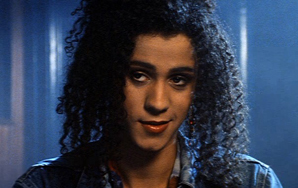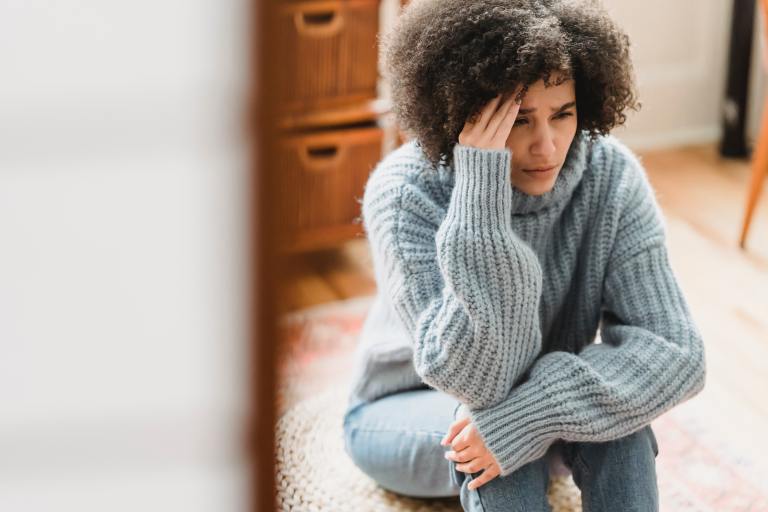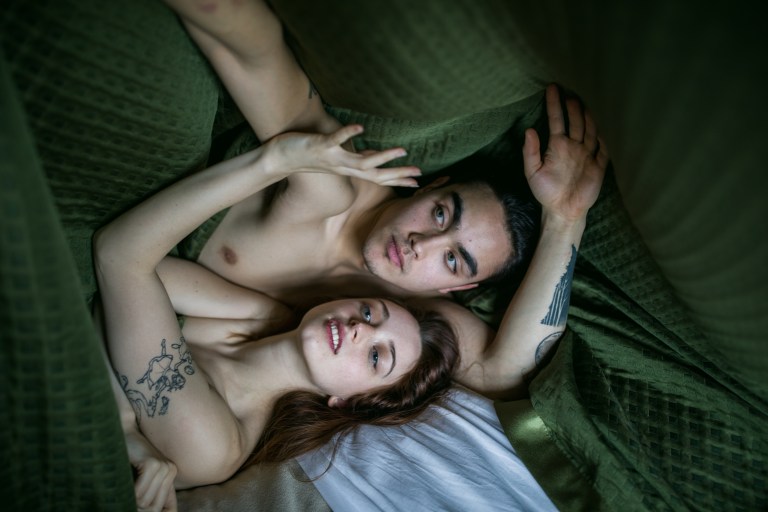We Need To Give Up Transphobia

A month ago, my friend Todd Clayton came out as a recovering transphobe in an incisive essay for Thought Catalog and Huffington Post entitled “The Queer Community Has to Stop Being Transphobic.” In the piece, Clayton details his own journey on transphobia and inclusion, how a Lana Wachowski speech opened his eyes to the quiet bigotry in his own life. He hadn’t openly attacked trans people or worked against their freedoms. Clayton was transphobic in a lot of the ways our community members are: insensitive and dismissive, not realizing the ways in which trans lives and struggles intersect with our own.
When he asked me to read it, I told him it was a common experience of cisgender people in the community. As someone who came from a similar place as he did, it was my experience. I told Todd that if he ever published it, I would come out with my own story. This is that story. It’s not easy to tell. I’ve been holding onto it for awhile, keeping it secret and safe. But it can’t stay secret any more.
My name is Nico Lang, and I used to be transphobic.
I never thought about myself that way. I thought that my emotions were normal and valid, feeling justified in my passive disgust for trans bodies. The first time I heard about trans people was when my father talked about seeing The Crying Game in the theater and the way the audience convulsed with shock when the heroine’s “secret” was revealed. My father claimed that people walked out or threw up when confronted with the image of transness or a life that didn’t fit their binaries.
I was a teenager. Binaries were all I knew. Like Patty Hearst, I grew to love my captivity. I identified with my oppressors, working to uphold that marginalization in my own life.
When I met a trans person for the first time, I didn’t think my emotions were hatred, but they had to show on my face. For the purposes of this essay, her name was Megan, and she was one of the oddest characters I’ve ever met, the kind of person you’ll never forget. Megan claimed to be a vampire and drink blood; she also told us stories of being a general’s wife and getting married in Egypt, as if she were a real-life Orlando or Candide. She wanted to believe she led a life that was too big to comprehend.
I thought she was pathetic. Rather than looking at her identity as a natural defense mechanism for a conservative Cincinnati that would always see her as an outsider, I refused to understand her. I didn’t try. My friend told me that Megan had been kicked out of her home and most schools she’d attended. This should have helped me be more compassionate, but my heart couldn’t open to let her in. I still think about her sometimes. I don’t know if she even knows I have anything to be sorry for, but I want to apologize anyway.
Like all hate, I held onto it and secretly nurtured it in my refusal to believe there was anything wrong with the way I felt. On my first day of Human Sexuality in college, we watched a video on transitioning, one that included thorough graphics on gender assignment surgery. Just as the doctor discussed creating a vagina out of the shaft of a penis, I tapped out. I went for a drink of water. I milled around in the halls, checking fake text messages. I didn’t even have a texting service at that time. I just couldn’t go back in there. This wasn’t what I’d signed up for.
I wasn’t sorry yet. I started to feel the void where sorry was supposed to be, the same one I felt when I saw Transamerica and turned away during its brief flash of nudity. I couldn’t look at her, just like a part of me couldn’t comprehend the identity of a trans masculine classmate of mine. When a friend showed me what trans masculine bodies looked like (from a coffee table book he owned of Loren Cameron’s work), I almost couldn’t believe it.
This is an actual quote: “But they look so normal.” It would be years before I learned to regret those words. I wish I could go back in time and punch that person in the face.
I wish there were a moment where I look at my behavior and realized that I needed to change, but life isn’t like that. There isn’t always a moment; there are a million moments, where you are made accountable to your lack of compassion and openness to the experiences of others, and that part of you will always still be there, nagging and pulling. Sometimes hate stays the same way it did before, and sometimes it lives on in racism, sexism and homophobia. Sometimes it just takes a nap.
My hate was always secretly directed inward. From an early age, I identified as female, and it was years before my parents could get me to put on a pair of jeans. I wanted to wear dresses. I settled for sweatpants. Most kids were obsessed with Barney or Chuck E. Cheese; I wanted to be like Jane Fonda, in her spandex and matching headband, commanding a room of women to be their best selves while protesting the war in Vietnam, winning Oscars and being married to an eccentric billionaire. Many of us grew up secretly believing we could have it all. I knew I could. Jane told me so.
My father has the same name as I do, and I didn’t want his name, just like I didn’t want his maleness. I went by the name “Nicky.” When my parents resisted, I started spelling it in increasingly elaborate and stripper-esque ways, like “Nicki,” “Nickie,” “Nikki” and “NICKEE*.” I dotted it with hearts, wrote it in pink and shellacked it with glitter. Some kids have to come out; I was barely ever in.
For a long time, my parents let it slide. This was at the height of my brother Jonathan’s illness, and my mother’s days were too filled with breathing tubes, doctor’s visits and press appearances to pay attention to anything else. My brother was born with a condition that they didn’t have a name for. Basically, his insides swelled until they couldn’t anymore. It was like his brain was trying to push its way out.
They didn’t name my gender variance either. They figured that if they didn’t pay attention to it, the problem would go away, like a car alarm or a Jehovah’s Witness. My father expected that I would grow to only love the things he did; he expected me to give up Barbies for G.I. Joes and teatime for football, the sport he so loved. He just wanted us to be playing on the same team. He didn’t expect to see me in dresses.
As a culture, when we see a man in a dress, we do one of two things: We laugh or we beat it out of him. We do that in different ways. My parents caught me playing Cinderella at daycare one day after work, and they didn’t hit me or punish me. They didn’t throw me on the street or pawn me off on a religiously conservative relative. They just showed me that wasn’t an option. This isn’t what boys do. I was never taught that it was okay to be a woman or that it was okay to be myself. Boys aren’t princesses; they rescue them.
They didn’t realize that one day I would need to rescue myself.
Hating yourself is easy. I found a million outlets to hate myself. I had Jesus, who was nailed to a cross because I wasn’t good enough. I had the locker room, which helped me learn to hate my body, on top of hating my soul. I had the guys who would wait outside my Pre-Calculus class to stare at me as I walked by, treating my queerness as a spectacle. I had the uncle who stopped talking to me when I came out, who would only direct questions or statements to me through my mother. He didn’t hate me for being a socialist or wanting to tear down his capitalist patriarchy because of my political beliefs or any interesting reason. He hated me for the same boring reasons everyone else did. He hated me without even knowing why.
Boring or not, hate sticks. And low-simmering hate is particularly dangerous, because it’s easy to ignore. Hate becomes a pattern, and you learn to hate for the same stupid reasons everyone else does. You hate without even knowing why, not recognizing that hate is a reflection of yourself.
You don’t choose to give up hate one day and wash your hands of it forever; the feelings stick with you, and they take lifetimes to cleanse. It’s not enough to simply not hate people, and you don’t get a pat on the back for looking at Lana Wachowski and saying, “Oh, I accept you now. Here’s an award. Go us!” You have to actively work to include trans people in your lives and spaces, accept a callout when you get it wrong and educate yourself to be better. You have to be accountable to yourself.
As Virginia Mamey Mollenkott argues, “It is vital for gay men, lesbians and bisexuals to recognize our movement as basically a transgender movement.” Mollenott tells us that it’s not just about homosexuality. It’s about being queer — or different from the norm. Our struggle is about gender. She writes, “The fact that the most effeminate gay men and the butchest lesbians are the most endangered among us should alert us to the fact that society cares less about what we do in private than it cares about a challenge to its longstanding gender assumptions.”
There was a time when I accepted not hating people as enough and credited myself as a good ally for “having trans friends.” Look how far I’ve come! However, our engagement needs more than love; it needs action. Trans people are some of the most visible and at risk in our collective struggle, and we must actively work with trans people, rather than simply for them. Gay cisgender men need to stop wondering where the T is and realize that the T is all around us, organizing and working to make the community safer for all of us. The trans movement isn’t the next movement.
Look around you. The movement is happening now, whether we care to recognize it or not.
The movement is KOKUMO. The movement is Kate Bornstein. The movement is Monica Roberts. The movement is Julia Serano. The movement is We Happy Trans. The movement is Girls Like Us. The movement is the Trans Month of Action. The movement is being broadcast all around you, and it’s coming to Chicago this weekend with The Trans 100, celebrating the incredible diversity of the trans community. Trans people are here. Are we paying attention?
I thought of Megan this week when GLAAD announced that it would be changing its acronym. The organization will no longer stand for the “Gay and Lesbian Alliance Against Defamation” but GLAAD, as in the emotion. This reflects that the organization not only speaks for gays and lesbians, but also includes trans people in its mission. This was announced even though the G and the L will remain in the organization’s name and their board is mostly comprised of white, cis males — much like HRC, our friendly neighborhood transphobes.
I don’t discredit them for that. I know personally that we all have to start somewhere, and that we can’t move forward without taking that first step. However, in giving up transphobia, we must do more than just mention trans folks. Trans people are worthy of full inclusion, and they must lead, speak, sign, march, walk and wheel next to us (or in front of us). We must realize that their perspectives and issues are as worthy of championing as ours. We need to shut up and learn to listen. As GLAAD moves forward, I hope they continue to listen and push inclusion further. I hope we all do.
A month ago Janet Mock very politely called me out on Twitter for getting something wrong in an article I wrote on transphobia in The Observer, and I learned from her. I haven’t always been great with callouts, but this time, I was happy to get schooled by the best. My work isn’t perfect. My work needs to be pushed and to push itself. I’m still learning — and that includes learning to love myself, finally. Personally, I’m still figuring out what gender means to me. Like everything else in my life, it’s a journey.
If I saw Megan today, I wouldn’t just apologize to her. I would thank her. After all, she succeeded in at least one way: I never forgot her. ![]()




